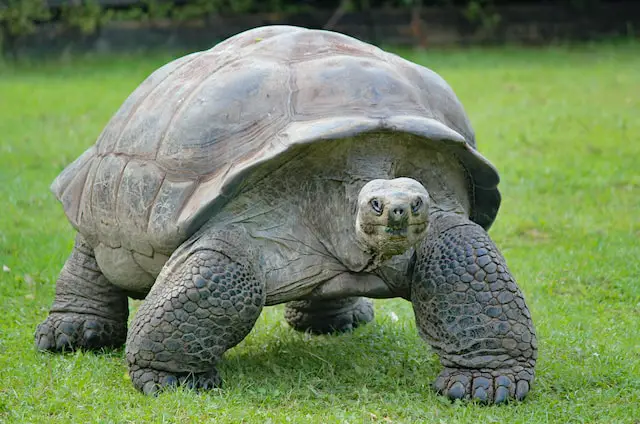Dropping a tortoise can be a concerning experience for pet owners. While these creatures are known for their hard shells, it is essential to understand the potential consequences of dropping them.
The severity of the situation depends on various factors, including the fall’s height, the tortoise’s age and size, and the surface it lands on.
Sometimes, a tortoise may not be visibly injured after being dropped. However, monitoring the animal closely for any signs of internal injuries or damage is still essential.
Tortoises have delicate internal organs that a fall can easily damage, even without external injuries. Signs of internal injuries may include lethargy, loss of appetite, difficulty breathing, or a behavior change. If any of these symptoms are present, it is essential to seek veterinary care immediately.
In more severe cases, a tortoise may suffer from external injuries such as cracks or fractures in its shell. These injuries can be painful and may require immediate veterinary attention.
If the shell is cracked, keeping the area clean and dry is essential to prevent infection. In some cases, a veterinarian may need to repair the shell using specialized techniques.
Overall, dropping a tortoise can have serious consequences, and it is essential to take the necessary precautions to prevent accidents from happening in the first place.
Immediate Response
If a tortoise is accidentally dropped, the owner’s immediate response is crucial to the animal’s well-being. Here are some steps to take:
- Assess the situation. Check the tortoise for visible injuries, such as cuts or broken limbs. If the tortoise appears to be in distress, take it to a veterinarian immediately.
- Provide a warm environment. If the tortoise is in shock, it may need to be kept warm. Place the tortoise in a warm, quiet area and cover it with a towel or blanket.
- Monitor the tortoise. Keep an eye on the tortoise for the next few hours to ensure it is not exhibiting any signs of injury or illness. If you notice any unusual behavior, contact a veterinarian.
It is important to note that dropping a tortoise can cause serious injury, even if there are no visible signs of harm. If the tortoise exhibits any signs of distress, it is best to seek professional medical attention immediately.
Long-Term Effects
Dropping a tortoise can have serious long-term effects on its health and well-being. Even if the tortoise appears to be okay immediately after the fall, there may be internal injuries that can lead to complications later on.
One of the most common long-term effects of dropping a tortoise is shell damage. The shell may crack or become deformed, which can lead to infections and other health problems.
The shell may need to be surgically repaired or replaced in severe cases.
Another potential long-term effect is damage to the tortoise’s internal organs. If the tortoise lands on its stomach or back, it may suffer from internal bleeding or other injuries that can be difficult to detect.
Over time, these injuries can lead to chronic health problems and a reduced lifespan.
In addition to physical injuries, dropping a tortoise can have psychological effects. Tortoises are sensitive animals that can become stressed or traumatized by sudden movements or loud noises.
If a tortoise is dropped, it may become fearful or anxious, leading to behavioral problems.
Dropping a tortoise can have severe and long-lasting effects on its health and well-being. It is essential to handle tortoises with care and to take steps to prevent accidents from happening in the first place.
Preventing Future Accidents
To prevent future accidents, taking precautions when handling your tortoise is essential. Here are a few tips to keep in mind:
- Always handle your tortoise with care and avoid dropping it. If you need to move your tortoise, use both hands and make sure to support its entire body.
- Provide a safe and secure environment for your tortoise. Make sure its enclosure is free of hazards and that it has plenty of space to move around.
- Consider adding padding to your tortoise’s enclosure to cushion any falls that may occur.
- If you have children or other pets, supervise them when they are around your tortoise to prevent accidental drops or injuries.
Following these simple tips can help prevent future accidents and ensure that your tortoise stays safe and healthy.




